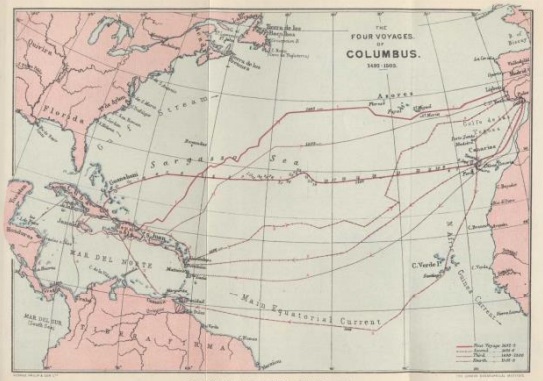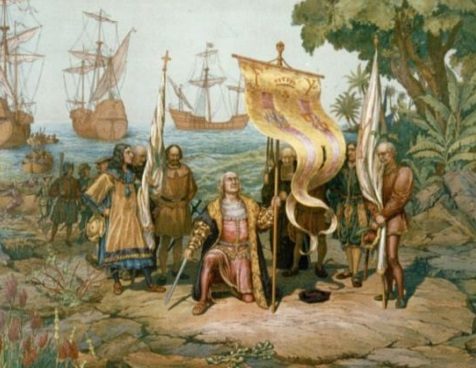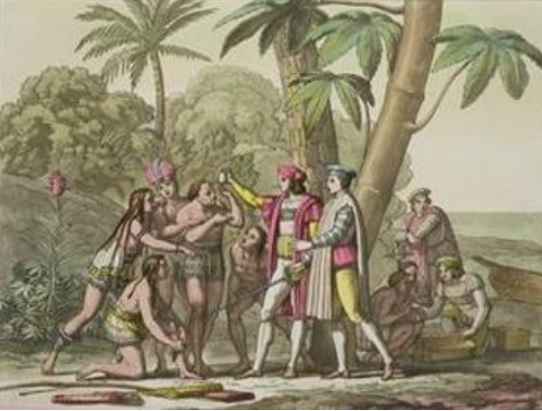The Discovery of America

Christopher Columbus (Cristoforo Colombo in Italian) was born in Genoa in 1451. Christopher had little education and, only as an adult, learned to read and write. He went to sea, as did many Genoese boys, and voyaged in the Mediterranean.
He was sure that if he sailed west he would come to India. He went to Spain and managed to get support from Isabella I of Castile. The crown and Columbus set the terms for the expedition and signed an agreement. On August 3, 1492, Columbus’ caravels, La Niña (captained by Vicente Yanez Pinzón), La Pinta (captained by Martin Alonso Pinzón), and Santa Maria (captained by Columbus) set sail from the port of Palos with a crew of about 90 men.

Most of his men were prisoners who volunteered to travel in order to become free. During the trip his crew threatened to kill Columbus if they didn’t reach land soon.
Most of his men were prisoners who volunteered to travel in order to become free. During the trip his crew threatened to kill Columbus if they didn’t reach land soon.
Fortunately on October 12, they arrived at an island in the Bahamas. This is why Columbus named the island San Salvador.

Columbus made four voyages to the America; however he never knew he had discovered a new continent. He believed he had reached Asia and called this place the Indies and its inhabitants, Indians. When he returned and told the kings about the wealth of the place he had visited, the monarchs decided to continue financing the other three voyages and more and more people sailed to America in search of wealth and fame.
Columbus was not the first European to cross the Atlantic. There is evidence that supports that the Vikings reached the New World about AD 1000.

But Columbus 7 didn’t only arrive in America; he stayed there and made it recognized in Europe. Columbus never even imagined that he was responsible for the encounter of two worlds: the old world (Europe, Africa, and Asia), and the new world, which would later be called America. Different societies and mutual influences would blend together to change both ways of life.
This encounter was terrible for the inhabitants of the New World. The Europeans took control of the land and forced the indigenous people to work in the mines; they imposed a religion and a new way of life upon them.
